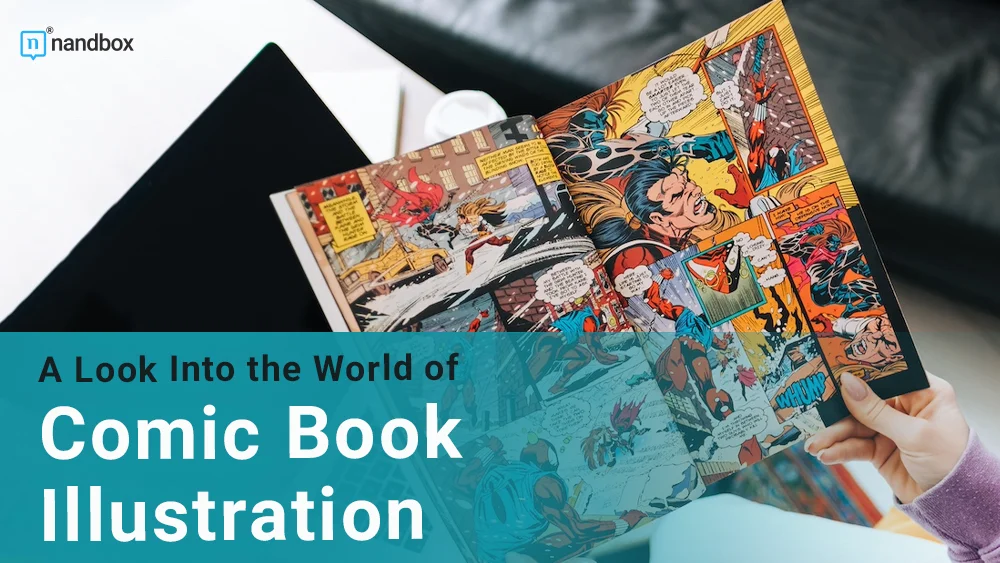A Deep Look Into the Marvelous World of Comic Book Illustration
Comic books have captivated readers for generations, transporting them to fantastical worlds filled with heroes, villains, and epic adventures. At the heart of every comic book lies the artistry of illustration, where skilled artists bring characters and stories to life through their imagination and creativity. In this article, we’ll delve into the fascinating world of comic book illustration, exploring its history, techniques, and impact on popular culture.
The Evolution of Comic Book Illustration
The art of comic book illustration traces its roots back to the early 20th century, with the publication of the first comic strips in newspapers and magazines. Pioneering artists such as Winsor McCay, Charles Schulz, and Hal Foster laid the foundation for the medium, developing iconic characters and visual storytelling techniques that would inspire generations of artists to come.
As the popularity of comic books grew, so too did the sophistication of their illustrations. The Golden Age of Comics (1930s-1950s) saw the emergence of legendary artists like Jack Kirby, Will Eisner, and Joe Shuster, whose dynamic artwork defined the superhero genre. Their bold lines, expressive characters, and dynamic compositions set the standard for illustrations and established many of the conventions still used today.
Techniques and Tools of the Trade
Comic book illustration is a multidisciplinary art form that incorporates elements of drawing, storytelling, and design. Artists employ a variety of techniques and tools to create compelling visuals that convey narrative, emotion, and action. Artists still widely use traditional media like pen and ink, brushwork, and watercolors, while digital tools like graphic tablets and software have revolutionized the industry by offering greater flexibility and efficiency.
Storyboarding and layout design are essential aspects of comic book illustration, helping artists plan the pacing, composition, and flow of a story. Artists use thumbnails and rough sketches to visualize scenes and establish a comic book’s overall structure before proceeding to the final artwork. They then apply inking, coloring, and lettering to bring the illustrations to life, adding depth, dimension, and atmosphere to the narrative.
The Art of Visual Storytelling
At its core, comic book illustration is a form of visual storytelling, where images convey meaning, mood, and emotion in tandem with written dialogue and captions. Artists must master the art of composition, perspective, and character design to effectively communicate the narrative and engage readers’ imaginations.
Characterization is a crucial aspect of comic book illustration, as artists must capture the essence of each character through their appearance, expressions, and body language. From the iconic silhouette of Batman to the larger-than-life presence of Superman, characters are brought to life through distinctive visual traits that resonate with readers and endure across generations.
Dynamic action sequences and dramatic visuals are hallmarks of comic book illustration, as artists employ dynamic poses, exaggerated perspectives, and intricate detailing to convey movement and excitement. From epic battles between superheroes and supervillains to quiet moments of introspection, every panel is carefully crafted to evoke emotion and draw readers deeper into the story.
Its Influence on Popular Culture
It has had a profound impact on popular culture, influencing not only other forms of visual media but also shaping societal attitudes and values. From the iconic imagery of Superman’s cape to the graphic symbolism of Batman’s bat signal, comic book illustrations have become indelible symbols of heroism, justice, and adventure.
The popularity of comic book adaptations in film, television, and video games has further cemented the cultural significance of comic book illustration, bringing beloved characters and stories to a global audience. Blockbuster franchises like the Marvel Cinematic Universe and DC Extended Universe have reimagined classic comic book tales for the big screen, introducing new generations to the timeless appeal of superheroes and supervillains. Among them, powerful Marvel characters like Iron Man, Spider-Man, and Black Panther have become household names, captivating audiences with their compelling stories and dynamic visuals.
Conclusion
In conclusion, comic book illustration is a dynamic and vibrant art form that continues to captivate audiences around the world. From its humble origins in newspaper strips to its current status as a multi-billion-dollar industry, it has evolved and adapted to changing tastes and technologies, yet its core principles of storytelling and visual expression remain as relevant as ever.
As we celebrate the rich history and legacy of comic book illustration, let us not forget the countless artists whose talent and creativity have brought joy and inspiration to millions of readers. Whether it’s the iconic images of Spider-Man swinging through the streets of New York City or the timeless wisdom of Calvin and Hobbes, it continues to enchant and enthrall us, reminding us of the power of imagination and the enduring magic of storytelling.






